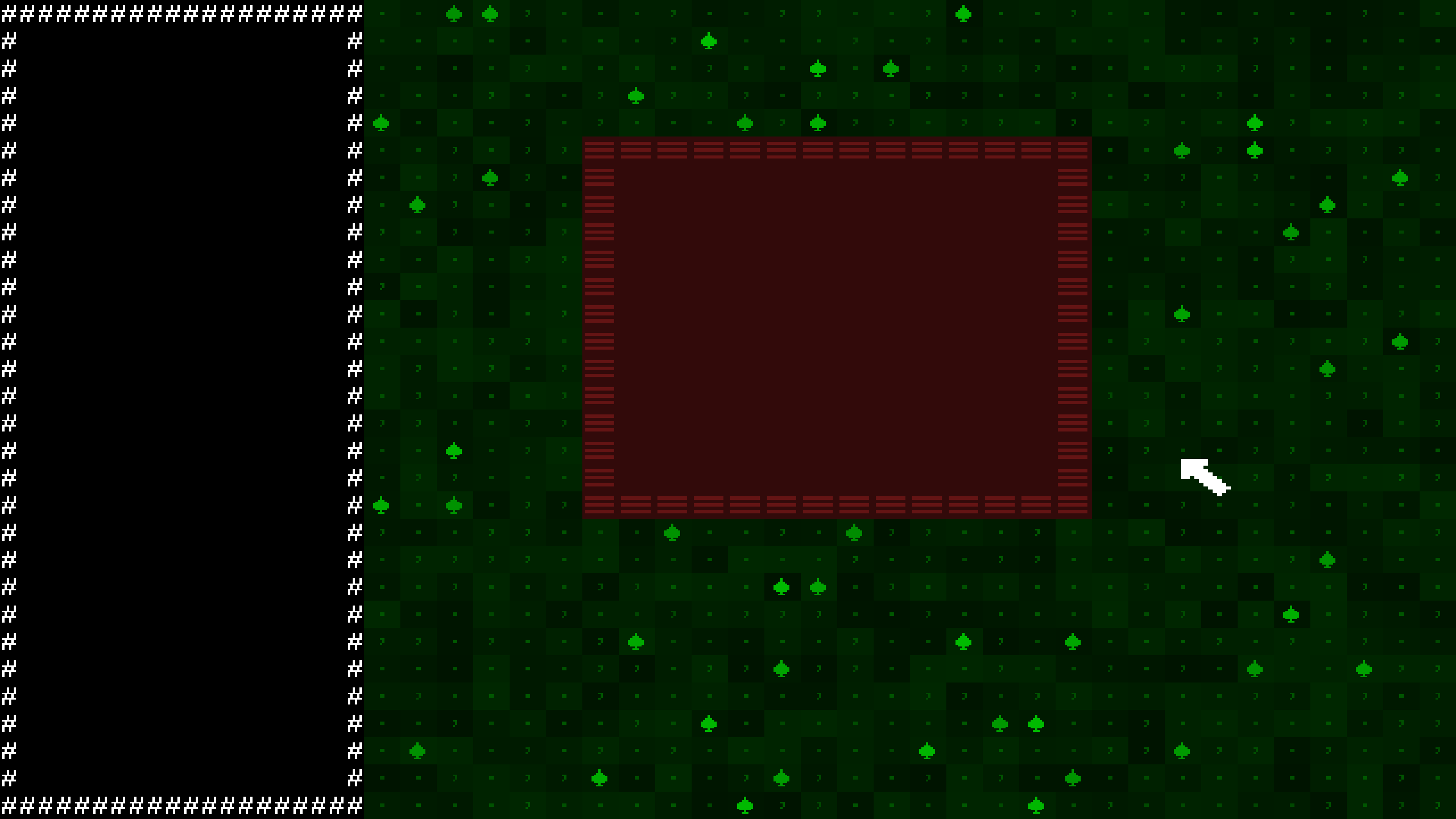Provides an interface for creating and managing a window as well as rendering glyph data for text-centric graphical applications such as roguelike games. The interface is generic across backends.
For now, copy src/rl_display.h and the implementation file of your choosing
into your project. Currently only the CSFML implementation src/rl_display_sfml.c
is available, so you'll need to link to the CFML library. CSFML is available in
the package managers for most *nix, homebrew on macOS, or can be downloaded
directly from the project's website prebuilt for Windows or the source code for
*BSD: link.
Once stabilized, a header-only version of roguelike_display will be generated.
Doxygen documentation can be found inline in src/rl_display.h.
Because whenever I went to make a roguelike game, regardless of the window management/rendering library I used, I'd eventually end up abstracting things out into a similar API. I decided to standardize that API, so that in the future I can cut down on boilerplate code. And by using C99, it should be easy to create bindings down the road for other languages such as nim or crystal.
For the initial implementation I went with CSFML because I wanted to get something up and running quickly. After I work with the API a bit and stabilize it, I plan on implementing it with OpenGL/FreeType and then maybe the SDL2 Renderer with SDL_TTF.
...
bool run = true;
rldisp *disp = NULL;
rltmap *tmap = NULL;
rltile *tile = NULL;
rlhue black = {0, 0, 0, 255};
rlhue red = {255, 0, 0, 255};
rlhue blue = {0, 0, 255, 255};
char *font = "res/fonts/unifont.ttf";
/* 1280x720 is the window size and 800x576 is the frame size which is stretched
* to the window. The third parameter specifies the window title and the fourth
* specifies whether or not the window is fullscreen.
*/
if (!(disp = rldisp_init(1280, 720, 800, 576, "roguelike display", false)))
goto cleanup;
/* You can set many window options */
rldisp_fpslim(disp, 60);
rldisp_vsync(disp, true);
rldisp_shwcur(disp, true);
rldisp_clrhue(disp, black);
/* rltmaps are grids of characters with the same character size and spacing.
* For this rltmap, the character size is 16, as well as the x and y spacing.
* 50x36 are the dimensions of the map. 65536 is the maximum unicode character
* value that should be supported.
*/
if (!(tmap = rltmap_init(font, 16, 65536, 50, 36, 16, 16)))
goto cleanup;
/* When you create a tile, you specify the type. This determines how the tile's
* glyph is placed within the space allocated for the tile in the rltmap.
*
* RL_TILE_TEXT (by font kerning, e.g. 'y' would intrude on the tile below)
* RL_TILE_EXACT (by the right and bottom values as offsets from the center)
* RL_TILE_FLOOR (centered horizontally and floored verticially)
* RL_TILE_CENTER (centered horizontally and vertically)
*
* If the type is RL_TILE_EXACT, then the last two parameters specify the right
* and down offset of the glyph from the top-left. Since this tile's type is
* RL\_TILE_CENTER, the arguments we pass do not matter (unless we change the
* tile's type in the future, which is possible with rltile_type(2)).
*
* All of an rltile's values can be changed after creation with the setter
* functions rltile_glyph(2), rltile_fghue(2), rltile_bghue(2), rltile_type(2),
* rltile_right(2), rltile_bottm(2).
*/
if (!(tile = rltile_init(L'╬', fg_color, bg_color, RLTILE_CENTER, 0.0f, 0.0f)))
goto cleanup;
/* Update the rltmap's tile grid at coordinate 0x0 with data from tile */
rltmap_ptile(tmap, tile, 0, 0);
while (rldisp_status(disp) && run)
{
/* Handle all window events and update keyboard state */
rldisp_evtflsh(disp);
/* Quit if escape is pressed */
if (rldisp_key(disp, RL_KEY_ESCAPE))
run = false;
/* Clear the rldisp */
rldisp_clear(disp);
/* Draw the rltmap onto the rldisp's frame buffer */
rldisp_drtmap(disp, tmap);
/* Stretch the frame buffer to the window and finish rendering */
rldisp_prsnt(disp);
}
cleanup:
rltile_free(tile);
rltmap_free(tmap);
rldisp_free(disp);
...

